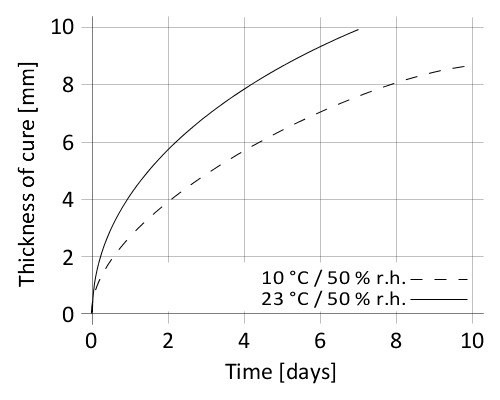Sikaflex® SOLO
Sikaflex® SOLO is a solvent free primerless to glass windshield adhesive offering 3 hours Minimum Drive-Away Time (MDAT). It provides a long open time and ensures safe application even under warm conditions.
Installations done with the Sikaflex® SOLO do not leave unpleasant odor in the car after replacing the windshield.
Note: Primerless to glass application requires the glass to be prepared using an Automotive grade glass cleaner such as Sika® Cleaner G+P. The bonding surfaces must be free of contamination and have proper UV protection.
- Primerless to glass adhesion
- 3 hours Minimum Drive-Away Time
- Easy to extrude with manual application gun
- Good bead stability and non-sag properties
- Fast adhesion build up
- Solvent free, no odor
PRODUCT BENEFITS
- Primerless to glass adhesion
- 3 hours Minimum Drive-Away Time
- Easy to extrude with manual application gun
- Good bead stability and non-sag properties
- Fast adhesion build up
- Solvent free, no odor
Areas of Application
Sikaflex® SOLO is suitable for experienced professional users only.This product and related process information is designed for Automotive Glass Replacement. For other applications, tests with actual substrates and conditions have to be performed ensuring adhesion and material compatibility.
Product Details
| Chemical base | 1-component polyurethane | |
| Color (CQP001-1) | Black | |
| Cure mechanism | Moisture-curing | |
| Density (uncured) | 1.31 kg/l | |
| Non-sag properties (CQP061-1) | Good | |
| Application temperature | ambient, product | 5 ─ 40 °C |
| Skin time (CQP019-1) | 35 minutes A | |
| Open time (CQP526-1) | 20 minutes A | |
| Curing speed (CQP049-1) | See diagram 1 | |
| Shore A hardness (CQP023-1 / ISO 48-4) | 50 | |
| Tensile strength (CQP036-1 / ISO 527) | 5.5 MPa | |
| Elongation at break (CQP036-1 / ISO 527) | 500 % | |
| Tensile lap-shear strength (CQP046-1 / ISO 4587) | 2.5 MPa | |
| Minimum Drive Away Time (cars) according FMVSS 212 (CQP511-1) | with airbag | 3 hours A, B |
| Shelf life | 12 months C |
| CQP = Corporate Quality Procedure | A) 23 °C / 50 % r. h. | B) details about MDAT contact Sika | C) stored below 25 °C |
CURE MECHANISM
Sikaflex® SOLO cures by reaction with atmospheric moisture. At low temperatures the water content of the air is generally lower and the curing reaction proceeds somewhat slower (see diagram 1).

Diagram 1: Curing speed Sikaflex® SOLO
CHEMICAL RESISTANCE
Sikaflex® SOLO is generally resistant to fresh water, seawater, diluted acids and diluted caustic solutions; temporarily resistant to fuels, mineral oils, vegetable and animal fats and oils; not resistant to organic acids, glycolic alcohol, concentrated mineral acids and caustic solutions or solvents.
Application
Surface preparation
Surfaces must be clean, dry and free from grease, oil, dust and contaminants.
The bond faces must be prepared with an Automotive grade glass cleaner such as Sika® Cleaner G+P. Sikaflex® SOLO is capable to bond on glass and ceramic frits without additional pre-treatment. Further information on the application and use of cleaning agent, can be found in the corresponding Product Data Sheet.
It is compatible with Sika's Black-Primerless or All Black installation process.
Windshields without ceramic coatings need proper UV protection.
Application
It is recommended to apply the adhesive with a piston-type application gun. Sikaflex® SOLO can be applied with good quality manual application guns.
Consider that the viscosity will increase at low temperature. For easy application, condition the adhesive at ambient temperature prior to use.
To ensure a uniform thickness of the bondline it is recommend to apply the adhesive in form of a triangular bead (see figure 1).

Figure 1: Recommended bead configuration
The open time is significantly shorter in hot and humid climate. The glass must always be installed within the open time. Never install a glass after the adhesive has built a skin.
Removal
Uncured Sikaflex® SOLO may be removed from tools and equipment with Sika® Remover-208 or another suitable solvent. Once cured, the material can only be removed mechanically.
Hands and exposed skin have to be washed immediately using hand wipes such as Sika® Cleaner-350H or a suitable industrial hand cleaner and water.
Do not use solvents on skin.
